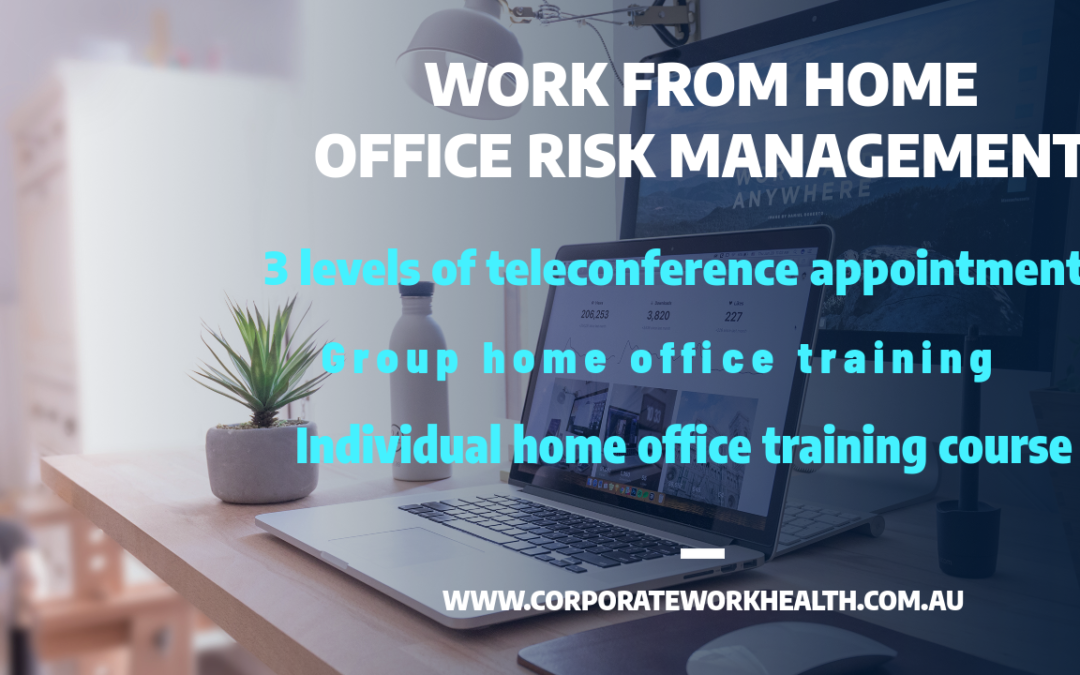Many of the businesses we have been consulting with over the last 2 weeks have been sending their workforce home to undertake business as usual, but have not necessarily known how to best manage working from home from a risk management approach as well as how to best support their workers in the short (weeks to months) and longer term. We have therefore decided to provide you with some thoughts on what you could do to meet your health and safety requirements as a business and best serve your workforce:
1. Identify within the current workforce any workers who may have pre-existing musculoskeletal complaints and/or have required specific ergonomic equipment to assist them in the management of their complaint whilst working in the office. These workers are likely to be impacted more so if they are just sent home to conduct work as normal without consideration of their pre-existing complaint, their current or proposed work from home environment and equipment/set up available to them.
2. Identify which of the workforce are likely to be impacted from a job role / tasks function at home. Do certain workers require specific equipment or other resources in order to complete their job efficiently and without excess stress and strain.
3. Have all workers complete a home self-risk assessment to identify broader home health and safety hazards and risks as well as proposed home workstation hazards and risks. Information gathered from this will enable the business to determine higher risk workers and implement control measures to eliminate or minimise hazards and risks.
4. Provide all workers or higher risk (pre-existing complaints, current complaints, those identified as high risk from a self assessment) workers with home office workstation risk assessments with a health professional (osteopath, physiotherapist) to educate them on best practice home office workstation set up as well as advice and management on how to prevent the aggravation of current or pre-existing complaints.
5. Provide workers with equipment where reasonably practicable and if workers are likely to be required to work from home for long periods, then consider allowing workers to take workstation accessories from the office i.e. chair, monitor(s), monitor stand/arm, copy holders, document holders, keyboard and mouse.
6. Educate the workforce on best practice home office ergonomics and movement. This could undertaken through a number of methods i.e. provision of soft copy reading materials, online educational videos and/or live webinars. It is difficult to know how long workers will be required to continue to work from home, so it is important to touch base with all workers to ensure their health and safety is being met. Isolating everyone at home and in many circumstances, allowing workers to be flexible with their work hours may be necessary as it is likely that they may be also juggling other responsibilities such as looking after children, parents and the household.
Corporate Work Health Australia have recently launched a range of services designed specifically for businesses whose workforce are now based at home.
Services include:
- Educational webinars (for larger groups)
- 1:1 telehealth/conference calls focusing on educating workers on how to optimise their home work office
- 1:1 risk assessments that includes a self assessment of their current work from home office, review of the self assessment documents, 1:1 teleconference/telehealth consultation followed by a report
Individual bookings can be made directly on our website (https://corporateworkhealth.com.au/ergonomic-assessment/covid-19-home-office-workstation-assessments/) , otherwise businesses with many workers > 20 workers can contact us directly and we can provide a customised quote that suits your business needs and budget. Email admin@corporateworkhealth.com.


